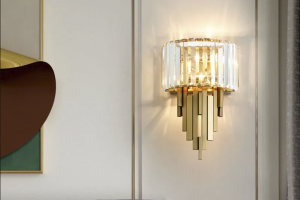Introduction
When it comes to interior design, chandeliers are often considered as the centerpiece of any room. Classic chandeliers, in particular, have been used for centuries to add elegance, sophistication, and character to homes, mansions, and palaces around the world. In this article, we will explore the history, features, and benefits of classic chandeliers in detail.
History of Classic Chandeliers
Chandeliers have a long and rich history that goes back to ancient times. The first known chandeliers were used by the ancient Egyptians, Greeks, and Romans, who used them to light up their palaces and temples. These early chandeliers were often made of bronze, brass, or iron, and featured simple designs with minimal decoration.
During the Renaissance period, chandeliers became more complex and decorative. Italian artisans began to create chandeliers that were ornately carved, gilded, and decorated with crystals, glass, and precious stones. These chandeliers were often used to impress visitors and show off the wealth and taste of their owners.
In the 18th and 19th centuries, chandeliers reached their golden age. French artisans such as Baccarat, Lalique, and Saint-Louis became famous for creating some of the most exquisite and luxurious chandeliers ever made. These chandeliers were often installed in royal palaces, grand hotels, and opera houses, and featured intricate designs, multiple tiers, and thousands of sparkling crystals.
Features of Classic Chandeliers
Classic chandeliers are characterized by their timeless designs, premium materials, and exquisite craftsmanship. Some of the key features of classic chandeliers include:
– Multiple tiers: Most classic chandeliers have multiple tiers, ranging from two to ten or more. Each tier features a different number of arms, which hold the light bulbs.
– Crystal prisms: Classic chandeliers are often decorated with crystal prisms, which refract the light and create a dazzling effect. Some chandeliers have hundreds or even thousands of crystals, which make them look like a shower of diamonds.
– Ornate decoration: Classic chandeliers are often decorated with intricate patterns, scrollwork, and motifs such as flowers, leaves, and vines. Some of the most luxurious chandeliers are also adorned with gold or silver leaf, enamel, and other precious materials.
– High-quality materials: Classic chandeliers are made of high-quality materials such as brass, bronze, crystal, and glass. These materials are durable, long-lasting, and resistant to tarnish and corrosion.
Benefits of Classic Chandeliers
Classic chandeliers offer a wide range of benefits to homeowners, decorators, and architects. Some of the key benefits of classic chandeliers include:
– Elegance and luxury: Classic chandeliers add a touch of elegance and luxury to any room. They are especially suited for formal rooms such as living rooms, dining rooms, and foyers.
– Timeless appeal: Classic chandeliers never go out of style. They are designed to withstand changing trends and fashions, and can be passed down from generation to generation as an heirloom.
– Versatility: Classic chandeliers come in a wide range of styles and sizes, making them suitable for any room and any decor. They can be used to create a dramatic focal point, or to provide ambient or task lighting.
– Decoration and art: Classic chandeliers are not just functional objects, but also works of art. They can be appreciated for their beauty, craftsmanship, and historical significance.
Conclusion
Classic chandeliers are more than just lighting fixtures. They are the epitome of elegance, luxury, and sophistication, and have a rich history and tradition. Whether you prefer a simple, understated design or a grand, ornate masterpiece, there is a classic chandelier out there that will suit your taste and style. So why not take your interior design to the next level with a timeless chandelier that will dazzle your guests and




More Posts
Stunning Vintage Opaline Lights: Illuminating Homes with Timeless Elegance
Bringing Versatility to Light: Exploring the Benefits of Dual Light Technology
Shining Light on E14 Bulbs: The Ultimate Guide to Understanding and Using Them